33 Refreshing Chinese Non-Alcoholic Drinks To Taste
Chinese non-alcoholic drinks represent a vibrant tapestry of flavors, traditions, and cultural heritage that quench thirst and delight the senses.
Ancient brewing techniques and regional ingredients contribute to an incredible array of refreshing beverages that go far beyond simple hydration.
Tea remains the foundational cornerstone of Chinese drink culture, with countless varieties offering unique taste profiles and health benefits.
These drinks reflect deep-rooted customs, seasonal preferences, and innovative culinary creativity passed through generations.
Some beverages showcase medicinal properties, while others celebrate local agricultural bounties and intricate preparation methods.
Each sip tells a story of regional identity, climate, and social connections that bind communities together.
Fascinating traditions and unexpected ingredient combinations make these non-alcoholic drinks more than mere liquid refreshment.
Here are 29 popular Chinese non-alcoholic drinks that will transport you through taste and tradition:
Which Chinese Non-alcoholic Beverage Types Are Refreshing?
Tea, fresh juices, and herbal infusions fill China’s menus with cooling, energizing options. There’s a perfect pick-me-up for every taste and season.
Pu Erh
Pu erh tea stands as a unique fermented beverage originating exclusively from Yunnan province in China, distinguished by its complex aging process and rich flavor profile.
Two primary varieties emerge: raw (sheng) and ripe (shu) pu erh, each offering distinct taste experiences with remarkable depth and character.
Raw pu erh presents a fresh, vegetal essence featuring subtle bitterness and a lingering sweet undertone, while ripe pu erh delivers a smooth, earthy flavor through carefully controlled fermentation techniques.
Specialized processing allows tea masters to transform leaves into multiple formats including loose tea, brick tea, cake tea, bell-shaped, and mushroom-shaped configurations.
Traditional production methods involve careful leaf selection, precise moisture control, and extended aging periods that can span decades.
Connoisseurs worldwide prize pu erh for its potential health benefits and sophisticated flavor complexity.
Each brewing reveals nuanced layers of taste that reflect the tea's intricate geographical and cultural heritage.
Longjing Tea (Longjing Cha)
Longjing tea stands as China's most prestigious green tea, meticulously crafted through traditional pan-roasting techniques that transform emerald-colored tea leaves into a prized beverage.
Harvested exclusively in spring near Hangzhou's West Lake region, this premium tea commands astronomical prices up to $875 per kilo for its first pickings.
Authentic Longjing delivers a complex flavor profile featuring buttery, toasty, and nutty undertones with subtle chestnut-like nuances.
When brewed, the tea produces a luminous green-gold liquid with exceptional smoothness and refreshing character.
Skilled tea masters carefully roast the broad, flat leaves to preserve their distinctive emerald color and delicate texture.
Tea connoisseurs worldwide recognize Longjing as a pinnacle of Chinese tea craftsmanship.
Summer harvests typically yield lower-quality versions, making spring-picked leaves particularly valuable.
Careful roasting and precise processing distinguish this exceptional tea from ordinary green tea varieties.
Black Tea
Black tea delivers robust flavors through heavy oxidation of Camellia sinensis leaves, transforming them into a rich amber brew with complex taste profiles ranging from earthy and malty to sweet and fruity.
Originating in China, this popular beverage spread globally through trade routes, becoming a staple in many cultures' daily rituals.
Brewing methods and leaf varieties significantly influence the final taste, with regions like Assam, Ceylon, and Darjeeling producing distinctive regional variations.
Professional tea masters carefully control oxidation processes to develop unique flavor characteristics in each batch.
Different processing techniques create popular styles like English Breakfast, Earl Grey, and Darjeeling blends.
Steeping times and water temperatures play crucial roles in extracting optimal flavors and aromas.
Traditionally served hot, black tea can also be enjoyed iced or as a base for milk tea and other beverages.
Health benefits include potential improvements in heart health, antioxidant support, and increased mental alertness.
Oolong
Oolong tea represents a sophisticated brewing tradition bridging green and black tea styles through intricate semi-oxidation processes spanning 10-80% oxidation levels.
Distinctive flavor profiles range from delicate melon and orchid notes to robust woody and spicy undertones, creating a complex sensory experience for tea drinkers.
Leaf colors transform dynamically from pale green and yellow to rich orange hues during careful processing, reflecting nuanced oxidation techniques.
Tea masters carefully control roasting and oxidation stages to develop unique characteristics in each batch.
Regional variations across Chinese tea-growing areas contribute to subtle flavor differences between mountain and valley grown leaves.
Specific oxidation percentages determine whether the final product resembles lighter green or deeper black tea styles.
Traditional brewing methods emphasize precise water temperatures and steeping times to extract optimal flavor profiles.
Sophisticated tea enthusiasts appreciate oolong's remarkable depth and complexity as a premium beverage.
Hong Kong-Style Milk Tea
Hong Kong milk tea is a creamy, silky beverage that blends robust black tea with condensed or evaporated milk through a unique straining method using a cloth filter resembling a silk stocking.
British colonial influences shaped this distinctive drink during Hong Kong's time under British rule.
Tea masters carefully brew strong black tea and pour it through a specialized cloth sock to create an exceptionally smooth texture.
Restaurants and street vendors across Hong Kong serve this iconic beverage hot or cold, making it a popular daily refreshment.
Traditional preparation involves multiple strainings to achieve maximum smoothness and rich flavor.
British afternoon tea culture directly inspired this unique tea style.
Street-side vendors and casual restaurants frequently feature milk tea as a standard menu item.
Locals and tourists alike enjoy this comforting, distinctively Hong Kong beverage throughout the day.
Sheng Pu Erh
Sheng pu erh tea represents an authentic raw tea variety from Yunnan province that naturally ages and ferments over several years, transforming its flavor profile from astringent to mellow and complex.
Produced through a simple process of withering and sun-drying tea leaves, this premium tea is traditionally pressed into compact blocks for careful storage in cool, humid environments.
Skilled tea masters carefully monitor the aging process, which can span decades and significantly enhance the tea's depth and character.
Connoisseurs prize sheng pu erh for its ability to develop nuanced flavors and improve with time, much like fine wine.
Each batch carries unique terroir and processing details that contribute to its distinctive taste profile.
Unlike its artificially fermented counterpart shou pu erh, sheng maintains a more traditional and pure approach to tea production.
Tea enthusiasts often collect and age these tea blocks as valuable investments.
Premium sheng pu erh can command high prices based on its age, origin, and carefully managed fermentation process.
Russian Caravan
Russian Caravan is a robust tea blend steeped in historical trading routes between China and Russia, featuring a distinctive smoky flavor profile from carefully selected black and oolong teas.
Keemun black tea and the distinctively smoky Lapsang Souchong form its traditional backbone, creating a complex brew with dark, spicy undertones.
Chinese traders originally transported tea across vast Siberian landscapes on camel caravans, which exposed the tea to campfire smoke and influenced its unique taste.
Oxidized teas form the blend's foundation, with potential variations including Indian Assam or Taiwanese tea leaves.
Modern interpretations maintain the blend's traditional smokiness while allowing subtle ingredient variations.
Tea enthusiasts appreciate its rich, malty character and connection to historic trade journeys.
Brewing Russian Caravan reveals deep, warm flavors reminiscent of ancient trading routes.
Each sip tells a story of cross-continental exchange and cultural connection.
Green Tea
Green tea represents a vibrant, non-oxidized beverage derived from Camellia sinensis leaves, distinguished by its bright emerald color and fresh herbaceous character.
Japanese and Chinese tea masters carefully heat the tea leaves through steaming or pan-frying to halt oxidation, creating a unique preservation process that locks in natural flavors.
Multiple varieties emerge from different cultivation regions, each offering distinct taste profiles ranging from grassy to floral undertones.
Global tea enthusiasts appreciate its complex flavor spectrum and minimal processing method.
Traditional preparation involves carefully selected leaves from specific tea shrub cultivars.
Antioxidant-rich green tea delivers potential health benefits like improved metabolism and reduced inflammation.
Modern consumption includes pure versions and innovative flavored blends.
International tea markets continue expanding green tea's global popularity through diverse brewing techniques and cultural traditions.
Shou Pu Erh
Shou pu erh tea represents an innovative fermentation technique developed in 1970s China to accelerate the natural aging process of traditional tea.
Craftsmen deliberately create this tea through controlled microbial fermentation, transforming raw tea leaves within two to three months under precise temperature and humidity conditions.
Tea masters carefully manage the process to produce a distinctive beverage with deep, earthy flavors and smooth characteristics.
Traditional pu erh tea originally required decades of natural aging, but shou method revolutionized tea production by dramatically reducing maturation time.
Dark brown to black in color, shou pu erh offers robust and rich taste profiles that appeal to serious tea enthusiasts.
Unique fermentation techniques give this tea its signature intense flavor and complex aromatic notes.
Complex microbial interactions during production create a unique drinking experience unlike any other tea variety.
Connoisseurs prize shou pu erh for its deep, complex taste and innovative production method.
Matcha
Matcha is a vibrant green tea powder known for its distinctive shade-grown cultivation and meticulous preparation method that transforms ordinary tea drinking into a rich sensory experience.
Japanese tea ceremonies have elevated matcha from a simple beverage to a cultural art form deeply rooted in tradition.
Originally introduced in China during the Tang Dynasty, matcha became a cornerstone of Japanese culture after Buddhist monks popularized its consumption.
Young tea leaves from the Camellia sinensis plant are carefully shaded before harvesting, which increases chlorophyll and amino acid content, creating a uniquely complex flavor profile.
Workers carefully remove stems and veins before stone-grinding the leaves into an ultra-fine powder that dissolves completely in water.
Unlike other teas that are steeped and discarded, matcha involves consuming the entire ground tea leaf, maximizing nutritional benefits.
Modern uses extend beyond traditional tea preparation, with matcha now featuring in desserts, smoothies, and contemporary culinary applications.
White Tea
White tea is a refined Chinese tea distinguished by its minimal processing and delicate white-haired buds harvested from young tea leaves.
Originating in Fujian, China, this rare tea variety undergoes minimal oxidation, preserving its subtle sweet flavor profile with gentle notes of flowers, fruits, and honey.
Silver Needle represents the most popular white tea type, carefully hand-picked to maintain its exceptional quality.
Subtle straw-colored liquid emerges when brewed, revealing complex yet understated taste characteristics.
Tea leaves are selected from Camellia sinensis plants when buds remain slightly unopened, contributing to its unique appearance.
Light and nuanced, white tea offers a sophisticated drinking experience far different from traditional green or black teas.
Production requires significant time and precision, making white tea more expensive than other tea varieties.
Skilled tea masters ensure each batch maintains its signature gentle, refined essence.
Tieguanyin
Tieguanyin tea stands as a premium oolong tea originating from Fujian province's Anxi region, celebrated for its complex flavor profile and rich cultural heritage.
Traditional styles feature deep amber colors with robust, toasty characteristics that hint at caramel and roasted nuts, embodying generations of careful tea crafting.
Modern interpretations lean toward lighter, more delicate expressions with subtle vegetal notes and gentle orchid fragrances.
Tea masters carefully control oxidation and roasting levels to create distinct variations ranging from deeply roasted to green-like versions.
Skilled producers select specific tea leaves to ensure optimal taste and aroma characteristics.
High-quality Tieguanyin requires precise processing techniques that transform raw leaves into nuanced beverages.
Each brewing method reveals different layers of flavor and complexity.
Connoisseurs worldwide prize this tea for its remarkable depth and sensory experience.
Gunpowder Tea
Gunpowder tea represents robust Chinese green tea distinguished by tightly rolled leaf pellets resembling gunpowder granules.
Green tea leaves from Zhejiang province undergo careful machine or hand rolling into compact spheres that dramatically unfurl when steeped in hot water.
Tea masters select premium leaves to create complex flavor profiles ranging from subtly smoky to earthy undertones.
Traditional production methods preserve authentic techniques despite modern manufacturing processes.
Taiwanese and Sri Lankan producers now complement Chinese tea cultivation with high-quality variations.
Superior grades maintain hand-rolling traditions that guarantee exceptional taste and aroma.
Each brew reveals golden-green liquor with nuanced sweetness and delicate green tea characteristics.
Connoisseurs prize this tea for its unique preparation method and distinctive sensory experience.
Lapsang Souchong
Lapsang souchong delivers an intense smoky black tea experience originating from Tongmu Guan in China, traditionally smoke-dried over pinewood fires.
Distinctive pine-wood smoking creates a robust flavor profile that sets this tea apart from other black teas.
Tea masters carefully dry leaves over specific pinewood flames, ensuring a balanced smokiness that does not overwhelm the tea's natural characteristics.
Multiple brewing cycles maintain the signature smoky essence, making each cup a rich sensory journey.
Savory meat dishes like pork and lamb complement its complex flavor remarkably well.
Authentic production remains concentrated in its original mountainous region, where generations have perfected the smoking technique.
Connoisseurs appreciate its unique taste, which ranges from mild to strong depending on smoking duration.
Small batches preserve the tea's traditional preparation methods, connecting modern drinkers to its historic roots.
Yellow Tea
Yellow tea emerges as a rare Chinese tea treasure prized for its sophisticated production and unique flavor profile.
Delicately processed through an intricate method involving sealed yellowing, this tea transforms green tea leaves into a smooth, nuanced beverage with complex aromatics.
Skilled tea masters carefully wither, fix, and steam the leaves before wrapping them in cloth, allowing them to develop a distinctive mellow character.
The tea's medium body and bright, clean taste distinguish it from other tea varieties.
Unlike mass-produced teas, authentic yellow tea remains challenging to source due to its meticulous manufacturing process.
Its limited availability contributes to its higher price point and exclusive status among tea connoisseurs.
Health enthusiasts often praise yellow tea for potential wellness benefits, though scientific research remains limited.
Traditional Chinese tea culture celebrates this exceptional beverage as a true sensory experience that captures centuries of tea-making expertise.
Da Hong Pao
Da hong pao is a legendary Chinese oolong tea distinguished by its exceptional rarity and astronomical value among global tea varieties.
Cultivated exclusively in Wuyi Mountains' challenging cliff landscapes of Fujian province, this tea derives unique mineral and earthy characteristics from its extraordinary growing environment.
Ancient Chinese tea traditions revere da hong pao for its complex flavor profile featuring deep, sophisticated aromatics and a lingering sweet finish.
Historical significance surrounds six original mother trees, now protected and no longer harvested, which represent the most authentic tea lineage.
Highly oxidized processing techniques contribute to its intense flavor complexity and deep character.
Premium varieties command extraordinary prices due to extreme scarcity and meticulous production methods.
Sophisticated tea collectors worldwide seek this rare beverage as a pinnacle of Chinese tea craftsmanship.
Connoisseurs recognize da hong pao as an unparalleled tea experience representing centuries of refined agricultural expertise.
Barley Tea (Damai-Cha)
Mugichai represents a traditional Japanese barley tea brewed from roasted barley grains, delivering a distinctive nutty and earthy flavor profile that spans Asian culinary traditions.
Ancient brewing methods involve steeping whole or ground roasted barley in hot or cold water, creating a light brown beverage with complex taste nuances.
Japanese households and restaurants frequently serve mugichai as a refreshing year-round drink, with summer versions often chilled and served over ice.
Teabags have modernized preparation, making the infusion more convenient for contemporary consumers.
Nutritional benefits include potential digestive support and mild antioxidant properties.
Tea enthusiasts appreciate its natural, grain-based character and smooth drinking experience.
Regional variations exist across different Asian countries, reflecting local agricultural practices.
Japanese culture particularly embraces mugichai as a everyday beverage with deep cultural significance.
Bai Mudan
Bai mudans are delicate white teas from Fujian, China, celebrated for their minimal processing and exceptional flavor profile.
Hand-picked in spring, these teas feature one or two leaves and a bud, carefully air-dried to preserve their natural essence.
Two primary varieties emerge from Fuding and Zhenghe, each offering unique characteristics ranging from lighter to fuller-bodied experiences.
Subtle sweetness defines these teas, complemented by gentle herbaceous and earthy undertones that refresh the palate.
Tea connoisseurs prize bai mudans for their nuanced taste and elegant preparation method.
Light golden liquor and soft floral aromas characterize this exquisite beverage.
Originating in traditional tea-growing regions, bai mudans represent centuries of Chinese tea cultivation expertise.
Smooth and refined, these teas provide a pure, understated drinking experience that connects you directly with nature's simplest pleasures.
Coffee With Tea (Yuanyang)
Yuanyang merges coffee and black milk tea in a harmonious Hong Kong street beverage that symbolizes opposites attracting, just like mandarin ducks.
Street vendors craft unique versions with varying coffee and milk tea proportions, creating a signature drink that balances three parts coffee with seven parts sweetened black tea.
Water, black tea leaves, condensed milk, and sugar form the traditional base of this innovative beverage.
Hong Kong residents popularized the drink, which quickly became a cultural staple.
Its name references mandarin ducks, known for their strong pair bonding despite different appearances.
Each vendor adds personal flair to their recipe, ensuring no two yuanyang taste exactly.
Travelers and locals alike enjoy this refreshing beverage throughout the day.
Restaurants and street stalls continue to serve this beloved drink across Hong Kong and beyond.
Kombucha
Kombucha is a fermented tea beverage celebrated for its complex flavor profile and probiotic benefits.
Originating in East Asia, this fizzy drink transforms sweetened tea through fermentation with a SCOBY culture that creates unique tangy and slightly acidic notes.
Tea leaves like black or green provide the base for this ancient brewing process, which takes several weeks to develop.
Microorganisms in the SCOBY convert sugar into organic acids, creating natural carbonation and beneficial bacteria.
Western cultures discovered kombucha in the 1990s, sparking widespread commercial production and home brewing trends.
Artisan brewers often enhance kombucha by adding fruit, herbs, or spices during secondary fermentation.
Commercial versions typically contain less than 0.5% alcohol, though some intentionally produce stronger varieties.
Kombucha's global popularity continues to grow as health-conscious consumers seek alternative beverage options.
Butter Tea
Butter tea is a traditional Himalayan beverage blending robust tea leaves with rich yak or cow butter, creating a warming and energizing drink that originated in 7th-century Tibet.
Mountain communities across Nepal, India, and Bhutan embrace this unique tea as a crucial source of nutrition and warmth in high-altitude regions.
Salt enhances the tea's distinctive flavor, balancing its creamy texture and providing essential minerals for harsh mountain environments.
Tibetan herders and nomads have long relied on this calorie-dense drink to sustain energy during long days of travel and work.
Preparing butter tea involves carefully churning black tea with butter and salt until a smooth, frothy consistency develops.
Modern variations sometimes include different types of milk or alternative fats to suit changing tastes.
Traditional preparation methods remain an important cultural practice in Himalayan communities.
Butter tea continues to symbolize hospitality and resilience in challenging mountain landscapes.
Buckwheat Tea (Kuqiao-Cha)
Sobacha is a warming herbal infusion crafted from roasted barley kernels that delivers a rich, nutty flavor profile without caffeine.
Japanese and other Asian cultures have long embraced this earthy beverage as a comforting drink with potential health benefits.
Roasting transforms barley's natural grains into a deep brown brew with a smooth, toasted essence.
Drinkers enjoy sobacha hot or cold, appreciating its naturally sweet undertones and mineral-like complexity.
Traditional preparation involves carefully roasting barley until it reaches a golden-brown color that releases deep, nutty aromas.
China and South Korea also make similar versions, known as kuqiaocha and memil-cha respectively.
Barley's natural properties contribute to potential digestive and metabolic advantages.
Health-conscious individuals often select sobacha as a nourishing alternative to standard tea.
Rougui
Rougui is a premium oolong tea from Fujian's Wuyi Mountains, celebrated for its exceptional complexity and persistent aromas.
Mountain-grown Wuyi rock tea delivers intense mineral and woody flavor profiles with remarkable depth.
Roasted tea leaves curl into rich brown hues, brewing a clear orange-yellow to amber liquid.
Sophisticated tea enthusiasts appreciate its mellow, smooth taste with distinctive floral and fruity undertones.
Skilled tea masters carefully control roasting levels to enhance the tea's nuanced characteristics.
Each sip reveals layers of warm, sweet notes that evolve gracefully.
Mature rougui becomes increasingly mild and refined over time.
Tea connoisseurs prize this exceptional Fujian oolong for its unique sensory experience.
Keemun Black Tea
Keemun tea emerges as a legendary black tea from Qimen County in Anhui Province, China, renowned for its complex flavor profile and distinctive red copper brew.
Burgundy-like in its sophistication, this tea offers a layered sensory experience with earthy undertones and subtle hints of spice and cocoa.
Traditionally produced as a green tea before 1875, Keemun quickly became a dominant black tea variety in its region.
Black tea experts prize its mellow character and low tannin content, which contributes to its smooth drinking experience.
Keemun serves as a foundational tea in popular blends like Earl Grey and English Breakfast, expanding its global reputation.
Culinary enthusiasts appreciate its versatility, pairing seamlessly with breakfast dishes, meats, cheeses, and spicy foods.
Its nuanced flavor spectrum ranges from floral to fruity, creating a rich and memorable tea experience.
Biluochun
Biluochun emerges as a prized Chinese green tea renowned for its delicate, handcrafted production in Jiangsu Province's Taihu Lake region.
Harvested early in spring, these thin, curly green leaves are gently pan-fried using traditional manual techniques.
Each leaf boasts a soft downy coating that contributes to its distinctive character.
Tea masters carefully select the most tender buds, ensuring exceptional quality and flavor.
When brewed, Biluochun reveals a clear pale green liquor with a complex taste profile.
Its flavor spectrum ranges from vegetal to subtly sweet, complemented by a gentle floral aroma.
Connoisseurs appreciate its refreshing and fruity undertones.
Premium Biluochun varieties command high prices due to their intricate preparation and unique sensory experience.
Alkaline Water (Kansui)
Kansui is a distinctive alkaline liquid solution key to creating authentic Japanese and Chinese noodles, particularly ramen, with its unique flavor-enhancing and color-transforming properties.
Japanese and Chinese culinary traditions rely on this powerful mixture of potassium carbonate and sodium carbonate to give noodles a signature yellow color and springy texture.
Ramen makers add kansui directly to wheat flour during noodle preparation, which triggers a chemical reaction that changes the noodle's molecular structure.
Professional noodle makers carefully balance kansui quantities to achieve perfect elasticity and appearance.
Sodium carbonate contributes to the noodles' characteristic golden hue and distinctive mouthfeel.
Home cooks can replicate kansui by mixing baking soda with water, though commercial versions offer more consistent results.
Traditional recipes often include specific ratios of alkaline ingredients to create optimal noodle quality.
Restaurant and home chefs consider kansui an essential ingredient for authentic Asian noodle dishes.
Huangshan Maofeng
Huangshan Maofeng green tea emerges as a prized Chinese beverage crafted in Anhui's mountainous regions with distinctive silvery-green leaves covered in delicate white fuzz.
Spring harvests yield the most exceptional quality, producing a bright yellow-green brew with complex flavor profiles.
Skilled tea makers carefully process the tender leaves to preserve their natural essence.
Tea connoisseurs recognize this variety as one of China's top ten green teas, celebrated for its unique characteristics.
Each sip reveals a subtle sweetness reminiscent of orchid notes and minimal astringency.
Gentle floral undertones complement the tea's smooth, mellow finish.
Seafood, fresh fruits, and light desserts make excellent pairing companions.
Meticulous harvesting and processing techniques contribute to Huangshan Maofeng's exceptional reputation in the world of premium green teas.
Junshan Yinzhen
Junshanis a premium Chinese yellow tea exclusively grown on Jun Shan island within Dong Ting Lake, distinguishing itself through exceptional rarity and strict harvesting protocols.
Ranked among China's top ten tea varieties, this prestigious beverage commands significant respect in tea circles.
Yellow tea production requires meticulous processing techniques that transform delicate tea leaves into a smooth, complex brew.
Tea masters carefully select young buds during an extremely limited seasonal window to create this exceptional drink.
Harvesting occurs under controlled conditions, ensuring only the highest quality leaves are selected.
Each batch represents painstaking agricultural and preparation traditions passed through generations.
Junshan tea leaves undergo specialized oxidation methods that separate it from other tea classifications.
Tea connoisseurs worldwide recognize this yellow tea as a remarkable Chinese tea heritage.
Huo Shan Huang Ya
Huo Shan Huang Ya represents an exquisite yellow tea from China's Anhui province, distinguished by its delicate processing method that creates a subtle yellow hue through careful indoor withering and covering before complete drying.
Royal courts during Ming and Qing dynasties prized this rare tea for its exceptional quality and refined taste.
Steeped leaves produce a light-straw colored beverage with smooth, round flavor profiles that blend floral, herbaceous, and fruity undertones.
Minimal tannins ensure low astringency, allowing natural sweetness to emerge gracefully.
Tea masters carefully manage each production step to preserve its unique characteristics.
Gentle fermentation techniques contribute to its distinctive elegance.
Connoisseurs appreciate its nuanced aromatics and soft texture.
Subtle nutty notes complete this sophisticated tea experience.
The Chinese Non-alcoholic Beverage Producers You Should Know
From heritage tea houses to cutting-edge juice brands, China’s beverage scene is booming. Meet the producers making waves in tradition and innovation alike.
Teavivre
TeaVivre represents an exceptional Chinese tea provider sourcing premium green teas directly from renowned growing regions like Zhejiang and Anhui.
Their carefully curated selection highlights authentic tea experiences through transparent production methods and comprehensive quality control standards.
Organic and non-organic tea varieties populate their extensive catalog, reflecting deep commitment to traditional tea cultivation practices.
Environmental sustainability guides their packaging approach, ensuring minimal ecological impact.
Detailed tasting notes accompany each tea selection, helping consumers understand unique flavor profiles and brewing techniques.
Passionate tea enthusiasts can explore multiple green tea options with confidence in TeaVivre's rigorous sourcing standards.
Customers benefit from precise origin information and expert recommendations for optimal tea preparation.
TeaVivre bridges traditional Chinese tea culture with modern consumer expectations through meticulous selection and presentation.
Bieyangpaopao Food Technology
Beyond Bubble sparkling water delivers innovative juice-infused beverages crafted with advanced beverage technology from Shanghai.
Shanghai-based Food Technology startup Beyond Bubble creates unique zero-sugar sparkling water with self-developed flavor essences.
High-temperature extraction techniques transform traditional bubble tea concepts into light, refreshing drink experiences.
Citrus and ginger juices form core flavor profiles in their beverage line.
Current product selections include jasmine citrus, ginger lemon, grape oolong, and white peach oolong varieties.
Each drink contains zero sucrose and fat, targeting health-conscious consumers.
Established in 2021, Beyond Bubble represents cutting-edge beverage innovation.
Modern consumers seeking lighter, flavorful alternatives will appreciate these innovative sparkling water options.
Chinese Non-alcoholic Beverages for Every Day
Discover the drinks locals love for relaxation and celebration. Each sip is a taste of Chinese culture, comfort, and creativity.
TeaVivre Lu Shan Yun Wu Green Tea
Lu Shan Yun Wu Green Tea represents a rare premium tea grown exclusively on Mount Lu's misty slopes in Jiangxi Province, China.
TeaVivre Tea Company carefully harvests these exceptional tea leaves from high-altitude regions with unique environmental conditions.
Mountain mists and specific climate patterns contribute to the tea's distinctive flavor profile.
Each carefully selected leaf produces a light green liquor with subtle complexity.
Its taste combines delicate sweetness with gentle vegetal undertones.
Tea enthusiasts appreciate the refined aroma and smooth drinking experience.
Multiple brewing techniques can highlight different flavor nuances.
Expert processing ensures the tea maintains its natural elegance and characteristic freshness.
Bieyangpaopao Food Technology Jasmine and Citrus Flavored Bubble Tea
Jasmin-citrus sparkling beverage blends sophisticated floral jasmine essence with zesty citrus undertones, creating a sophisticated refreshment from Beyond Bubble's innovative drink collection.
Shanghai-based food technology experts carefully extract premium jasmine using high-temperature liquid techniques, delivering a nuanced flavor profile that balances delicate floral notes with bright citrus tang.
Mild jasmine provides a subtle sweetness and gentle relaxation, while citrus elements introduce vibrant, energizing accents.
Carefully crafted ingredients complement each other, producing a multi-layered sensory experience.
Natural tea extraction methods ensure maximum flavor retention.
Single-serve packaging makes this drink convenient for diverse consumption moments.
Consumers seeking unique, balanced beverages will appreciate its sophisticated taste composition.
Light and crisp, this beverage suits multiple occasions and personal preferences.
How Are Traditional Non-Alcoholic Chinese Beverages Typically Made and Served?
Traditional non-alcoholic Chinese beverages showcase a rich heritage of natural ingredients and thoughtful preparation, designed to refresh, nourish, and balance the body:
These beverages emphasize balance and wellness, perfectly complementing Chinese meals or enjoyed on their own for refreshment.

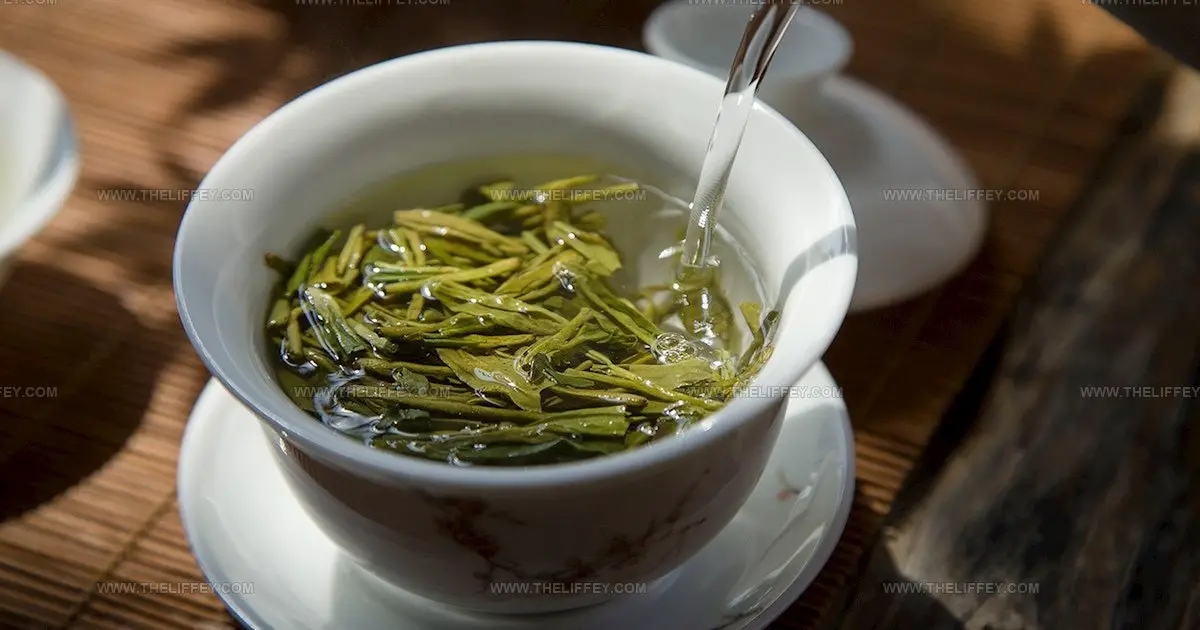
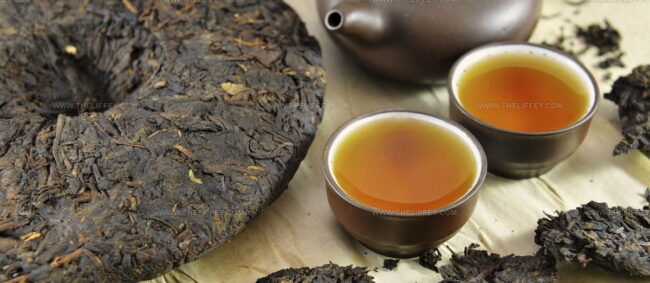
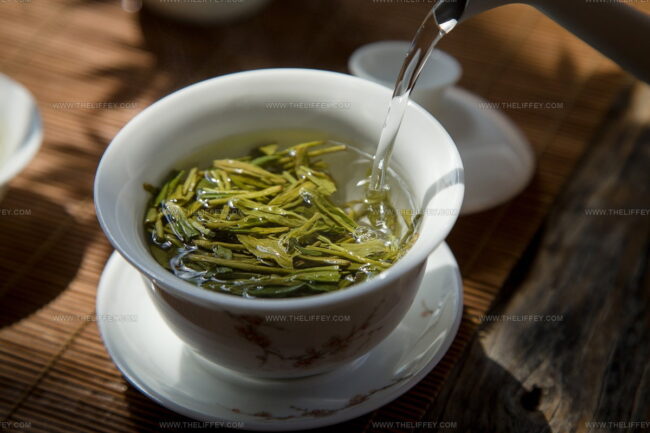

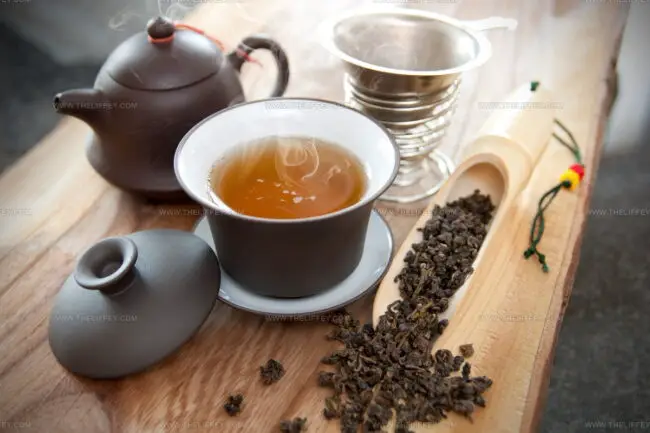


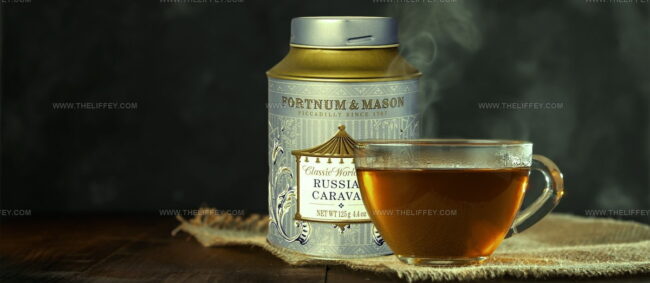

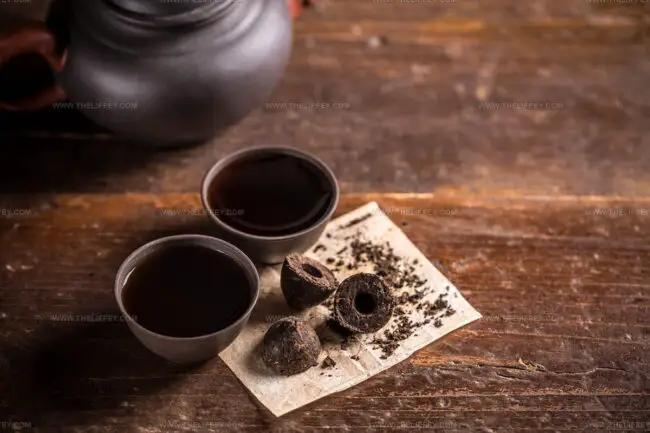
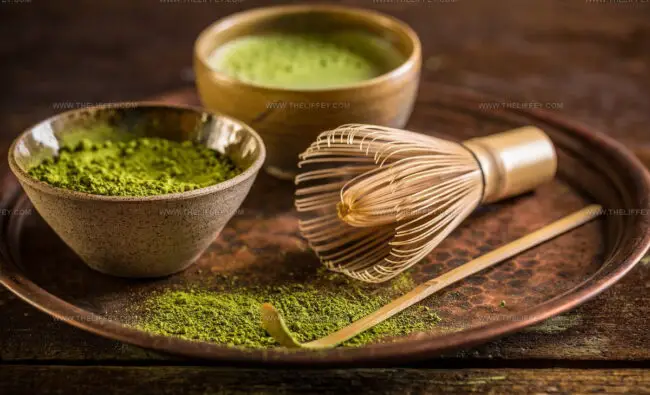
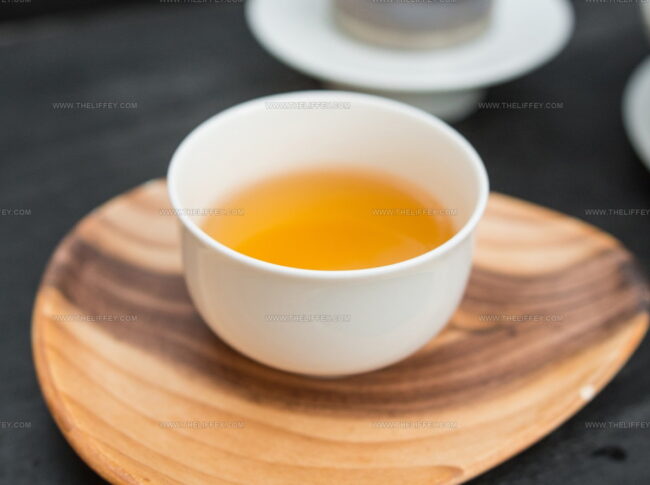


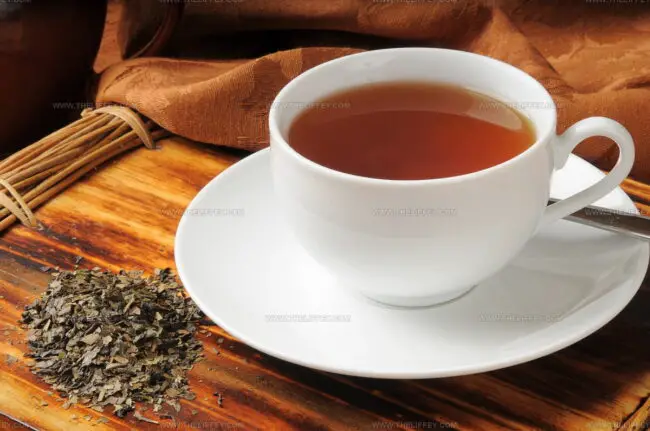


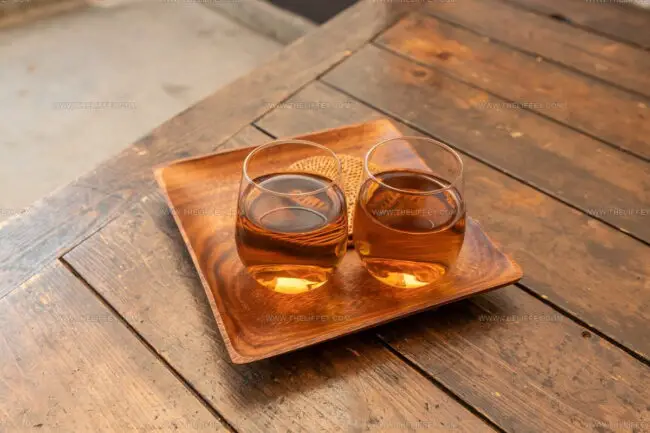
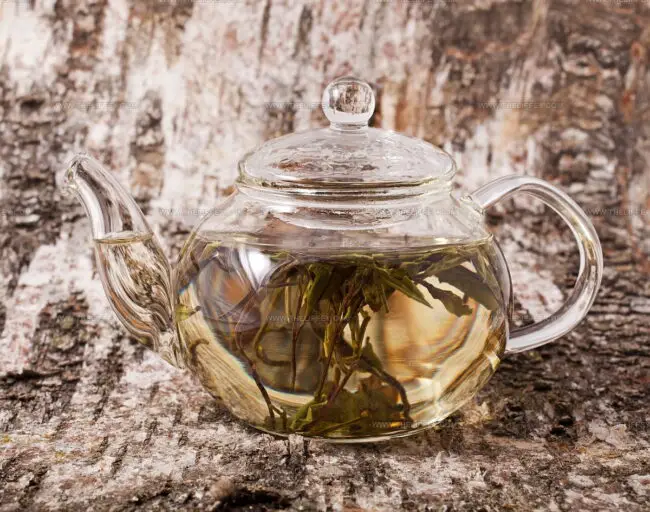
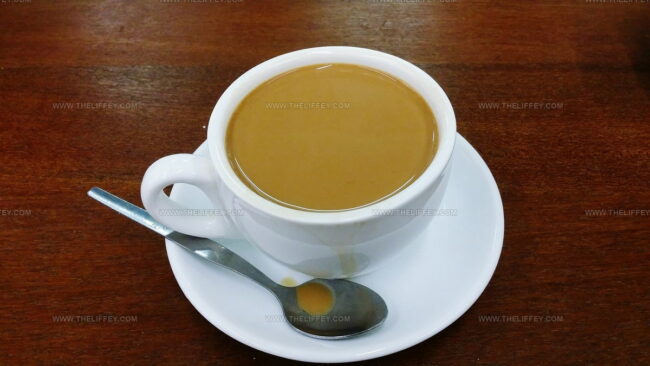
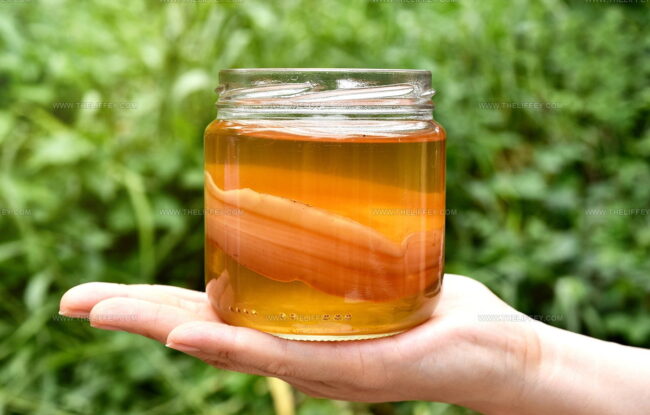
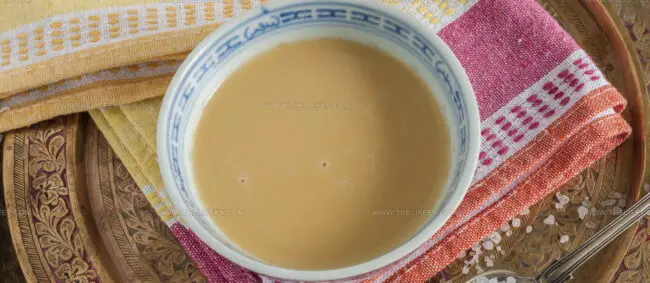
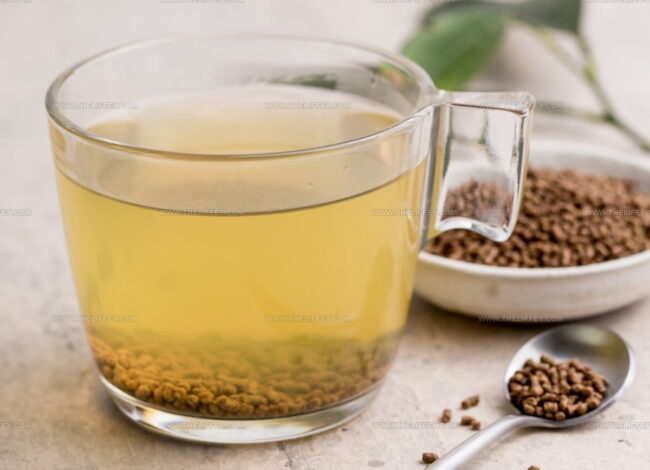
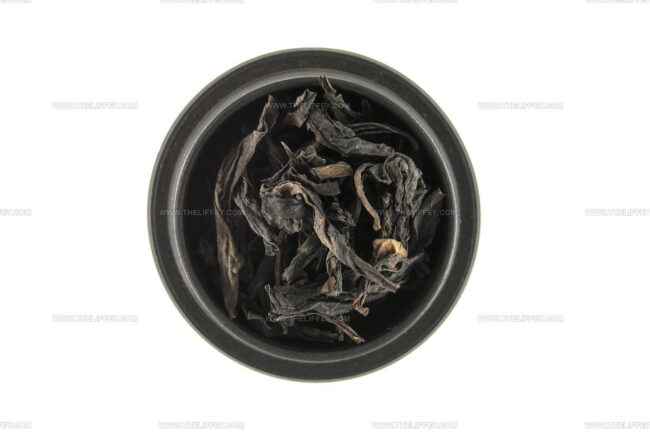
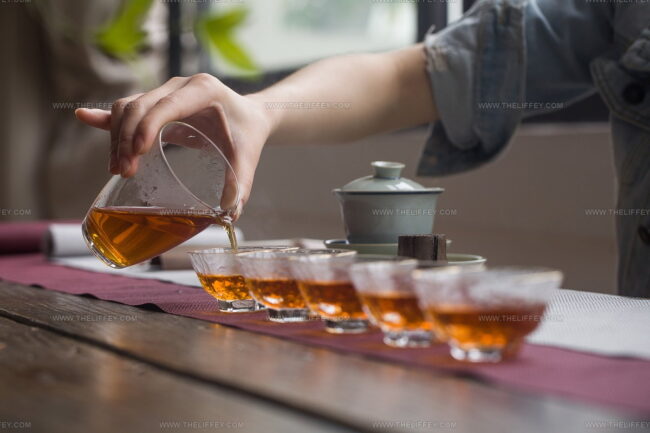
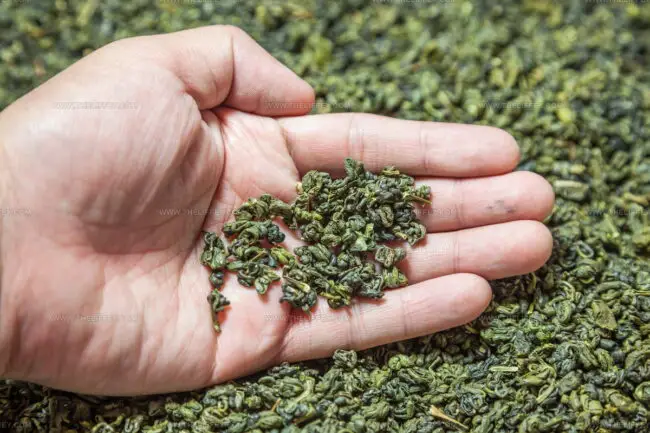

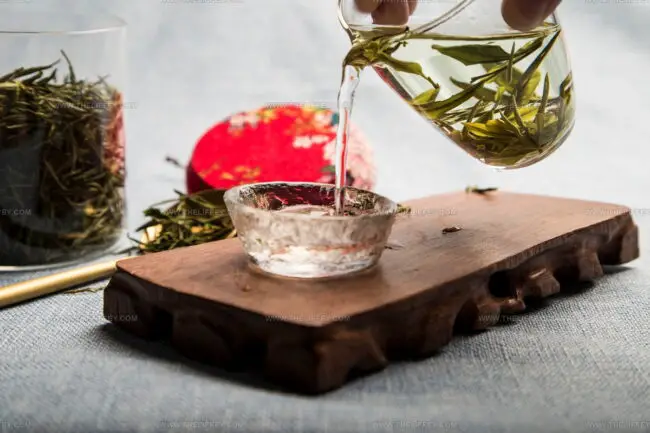
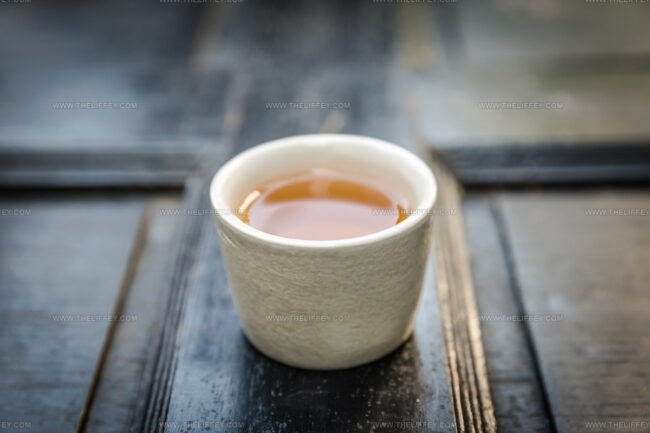
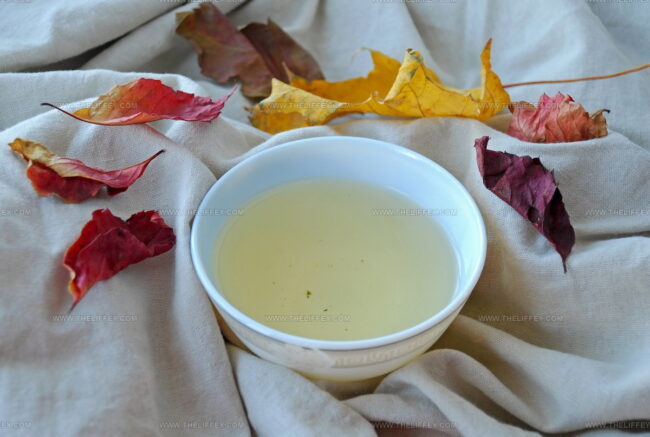
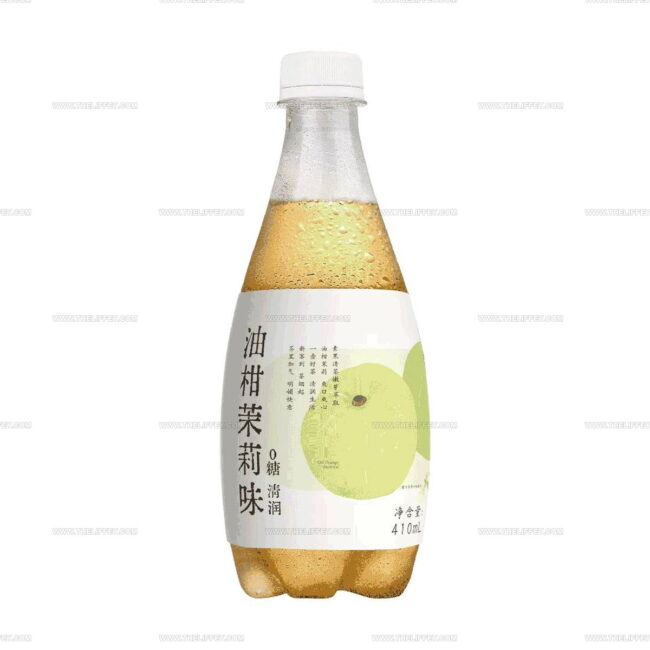
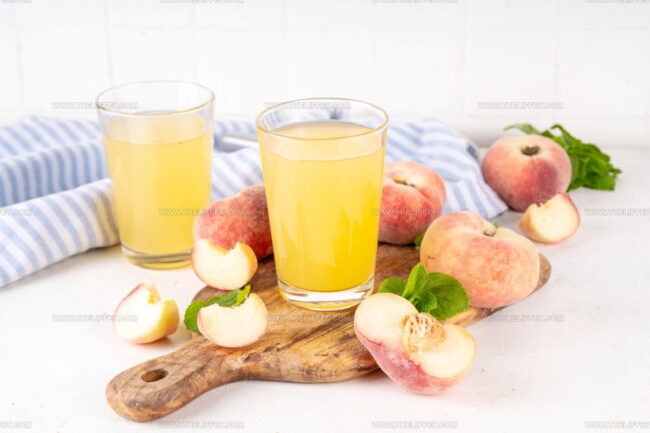
Amanda Bennett
Recipe Curator & Culinary Educator
Expertise
Baking and Pastry Arts, Recipe Testing and Development, Culinary Instruction, Food Styling and Photography
Education
Asheville-Buncombe Technical Community College, Asheville, NC
Diploma in Culinary Arts
Emphasized practical cooking skills, nutrition, and kitchen management.
Cambridge School of Culinary Arts, Cambridge, MA
Certificate in Professional Pastry Arts
Specialized in baking techniques, dessert presentation, and flavor profiling
Amanda’s roots run deep in the Southern hills, where every meal started fresh from the garden and every dessert came with a story. She trained at Asheville-Buncombe Technical Community College and sharpened her pastry skills at the Cambridge School of Culinary Arts, blending classic technique with everyday charm.
At The Liffey, Amanda’s passion is making baking and home cooking feel natural and joyful. She’s all about single recipes that are simple enough for a busy afternoon, but special enough to make someone’s day a little sweeter.